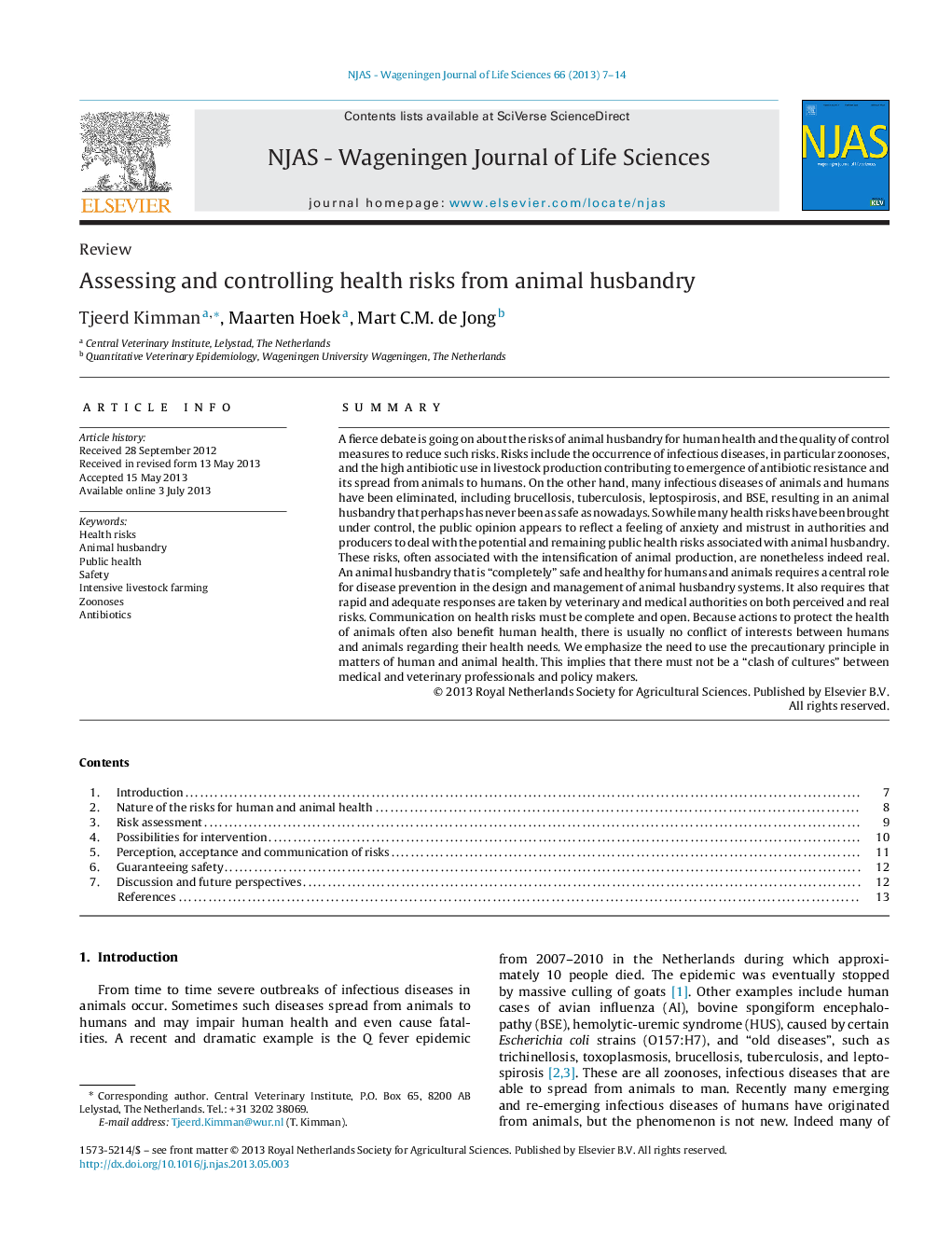| Article ID | Journal | Published Year | Pages | File Type |
|---|---|---|---|---|
| 4501298 | NJAS - Wageningen Journal of Life Sciences | 2013 | 8 Pages |
•Describes the risks from animal husbandry to animal and human health.•Shows the interconnectivity between animal and human health.•Emphasizes the importance of the precautionary principle in matters related to health.•Discusses perception of risks and demands on risk comunication.•Discusses methods for guaranteeing safety.
SummaryA fierce debate is going on about the risks of animal husbandry for human health and the quality of control measures to reduce such risks. Risks include the occurrence of infectious diseases, in particular zoonoses, and the high antibiotic use in livestock production contributing to emergence of antibiotic resistance and its spread from animals to humans. On the other hand, many infectious diseases of animals and humans have been eliminated, including brucellosis, tuberculosis, leptospirosis, and BSE, resulting in an animal husbandry that perhaps has never been as safe as nowadays. So while many health risks have been brought under control, the public opinion appears to reflect a feeling of anxiety and mistrust in authorities and producers to deal with the potential and remaining public health risks associated with animal husbandry. These risks, often associated with the intensification of animal production, are nonetheless indeed real. An animal husbandry that is “completely” safe and healthy for humans and animals requires a central role for disease prevention in the design and management of animal husbandry systems. It also requires that rapid and adequate responses are taken by veterinary and medical authorities on both perceived and real risks. Communication on health risks must be complete and open. Because actions to protect the health of animals often also benefit human health, there is usually no conflict of interests between humans and animals regarding their health needs. We emphasize the need to use the precautionary principle in matters of human and animal health. This implies that there must not be a “clash of cultures” between medical and veterinary professionals and policy makers.
